Psychology Books - The Feeling Of What Happens By Antonio Damasio
About the Breakthroughs Need Breakdowns Author
Ben Foodman is a licensed psychotherapist & performance specialist. He owns his private practice located in Charlotte North Carolina where he specializes in working with athletes to help them overcome mental blocks (the yips), PTSD, ADD / ADHD and achieve flow states through the techniques of Brainspotting & Neurofeedback. If you are interested in services, use the link here! Enjoy the article below!
Introduction: The Feeling Of What Happens By Antonio Damasio
I have spent a considerable portion of my career trying to help athletes overcome mental blocks such as the Yips. What I have found in my work with different performers is that this is an issue that affects far more athletes than people realize. For instance, while the term the Yips is mostly used in the sports of baseball and golf, athletes in all sports such as gymnastics, cross-country, equestrian athletics and other sports experience the Yips just as intensely and in some cases with higher frequencies. Gymnastics athletes are an example of this, but instead of calling this mental block the Yips, they call it the Twisties.
Because I recognized that this is a very prevalent problem for athletes, I wrote a book about this topic called Breakthroughs Need Breakdowns. My experiences with athletes no doubt served as the primary influence for my understanding on how to effectively help athletes overcome the Yips, but there were also many important secondary sources that guided my thinking on this. One of those sources was a book written by Antonio Damasio, The Feeling Of What Happens. For this issue of the Notes I want to provide introductory details about what the Yips are and how Antonio Damasio’s book influenced my work.
Part I. What Are The Yips?
The Yips is a psychological phenomenon that occurs when an athlete is no longer able to perform even simple movements in their sport despite no current presence of a physical injury or range of motion issues. The vast majority of sport psychologists that attempt to help athletes overcome this issue focus on using ‘insight’ building approaches such as positive self-talk or cognitive behavioral therapy. The idea behind using these approaches is that the sport psychologist will try to overload the athlete’s Yips or ‘negative’ thinking patterns with more positive and logic-based thinking strategies. However, when we really dive into the basic functions of the brain during this experience, what we find is that these approaches are misplaced and not appropriate for dealing with this issue.
I have spent a considerable amount of time in previous Training Report issues discussing how trauma is connected to the Yips. To summarize, when we have experiences that exceed our ability to cope with those moments our brain is left in a state of alarm. Because a trauma event can be so overwhelming to an athlete’s brain, the experience oftentimes is not fully processed the entire way through, thereby leaving an athlete’s mind in a frozen state of confusion trying to make sense of the experience. While this is certainly foundational towards understanding the Yips, we need to go even ‘deeper in the weeds’ to really grasp the nuance of this neurological process. Antonio Damasio’s book The Feeling Of What Happens: Body and Emotion In the Making of Consciousness provides important context for understanding this issue.
Part II. How The Feeling Of What Happens Explains The Yips
‘In this groundbreaking book, Dr. Antonio Damasio — a renowned and revered scientist and clinician who spent decades following amnesiacs down hospital corridors, waiting for comatose patients to awaken, and devising ingenious research using PET scans to piece together the great puzzle of consciousness — explores the biological roots of sentient awareness and its role in survival. Consciousness is the feeling of what happens-our mind noticing the body's reaction to the world and responding to that experience. Without our bodies there can be no consciousness, which is at heart a mechanism for survival that engages body, emotion, and mind in the glorious spiral of human life’. Linking body and emotion in an arresting and original study of what it is to be human, The Feeling of What Happens had an incredible impact on my understanding about the complexity of the Yips and how athletes deal with this issue. Specifically, there is an excerpt in the book that touches on the connection between consciousness and the brain’s ongoing process of ‘identifying where the body ends, and where the world begins’. The author states the following: core consciousness occurs when the brain’s representation devices generate an imaged, nonverbal account of how the organism’s own state is affected by the organism’s processing of an object, and when this process enhances the image of the causative object, thus placing it saliently in a spatial and temporal context. This hypothesis outlines two component mechanisms: the generation of the imaged nonverbal account of the object-organism relationship-which is the source of the sense of self in the act of knowing - and the enhancement of the images of an object.
The author continues: As far as the sense of self component is concerned, the hypothesis is grounded on the following premises: consciousness depends on the internal construction and exhibition of new knowledge concerning an interaction between that organism and an object. The organism, as a unit, is mapped within the brain, in the sensory and motor structures activated by the interaction of the organism with the object, both organism and object are mapped as neural patterns, in the first-order maps; all of these neural patterns can become images. The sensorimotor maps pertaining to the object cause changes in the maps pertaining to the organism. The changes described previously can be re-represented in yet other maps (second-order maps) which thus represent the relationship of object and organism. The neural patterns transiently formed in second-order maps can become mental images, no less so than the neural patterns in first-order maps. Finally, because of the body-related nature of both organism maps and second-order maps, the mental images that describe the relationship are feelings. Because the book offers incredible insight into consciousness such as the previous excerpt, these explanations helped me create a deeper understanding as to how these maps become ‘dysregulated’ by unnatural events that happen to us (e.g. athletes becoming injured and developing the Yips). Furthermore, the book emphasized the importance of what people commonly refer to as the mind-body connection, and that professionals in sport psychology and psychotherapy need to be focusing on ‘bottom-up’ approaches (what we feel) as much if not more than ‘top down’ approaches (logic-based thinking).
Part III. Brainspotting & Mental Skills Training
One of the best ‘bottom-up’ forms of mental training that follow the core principles of The Feeling Of What Happens, is an intervention called Brainspotting. Brainspotting is a brain-based psychotherapy technique that utilizes the athlete’s field of vision to identify unresolved psychological issues. In Brainspotting we say ‘where you look affects how you feel’ and through this process athletes have the ability to access the parts of their brain that traditional psychotherapy approaches such as cognitive behavioral therapy are unable to do. This results in athletes being able to directly address the true ‘underlying’ issue (which we refer to as a Brainspot or what physiotherapists call the Neurotag) that has created conflict allowing individuals to move from needing to constantly cope, to not needing to cope at all. Brainspotting can be used to help anyone who is dealing with mental blocks, the yips, psychologically traumatic events, chronic pain issues from injuries, as well as individuals who are trying to access deeper levels of creativity or cultivating mental flow states.
The goal of all psychotherapy interventions are to help athletes move from dysregulation to regulation. For instance if you are a racecar driver and you have been experiencing mental blocks such as increased pre-performance anxiety or fear responses (misreading if the car is too tight or loose), this can be considered a state of dysregulation. Because almost half of the brain is dedicated to vision, we use the athlete’s field of vision combined with focused mindfulness to help engage the regions of the brain that are responsible for regulation and bypass the regions that are not! This physiological approach can help athletes achieve their desired psychological outcomes. When athletes work with a sport psychologist who uses Brainspotting, they will first identify what the issue is that they would like to resolve. Athletes discuss the issue in-depth and then the sport psychologist invites the athlete to have their eyes follow a pointer that the clinician will move in certain directions to identify the eye position that is relevant to the topic that the client is looking to resolve. Once the eye position is identified, the athlete will hold that eye position for either several minutes or up to two hours potentially until the issue is resolved. This form of mental training is discussed in great detail in Breakthroughs Need Breakdowns and provides a case study about how when Brainspotting is used as a continuous form of mental training, regardless of the sport athletes will be able to increase the chances of sustaining a long and healthy career in their field of competition. The way I discuss Brainspotting in my book was significnatly influenced by Antonio Damasio’s book, and I strongly recommend people check out his work to learn more about this issue!






























